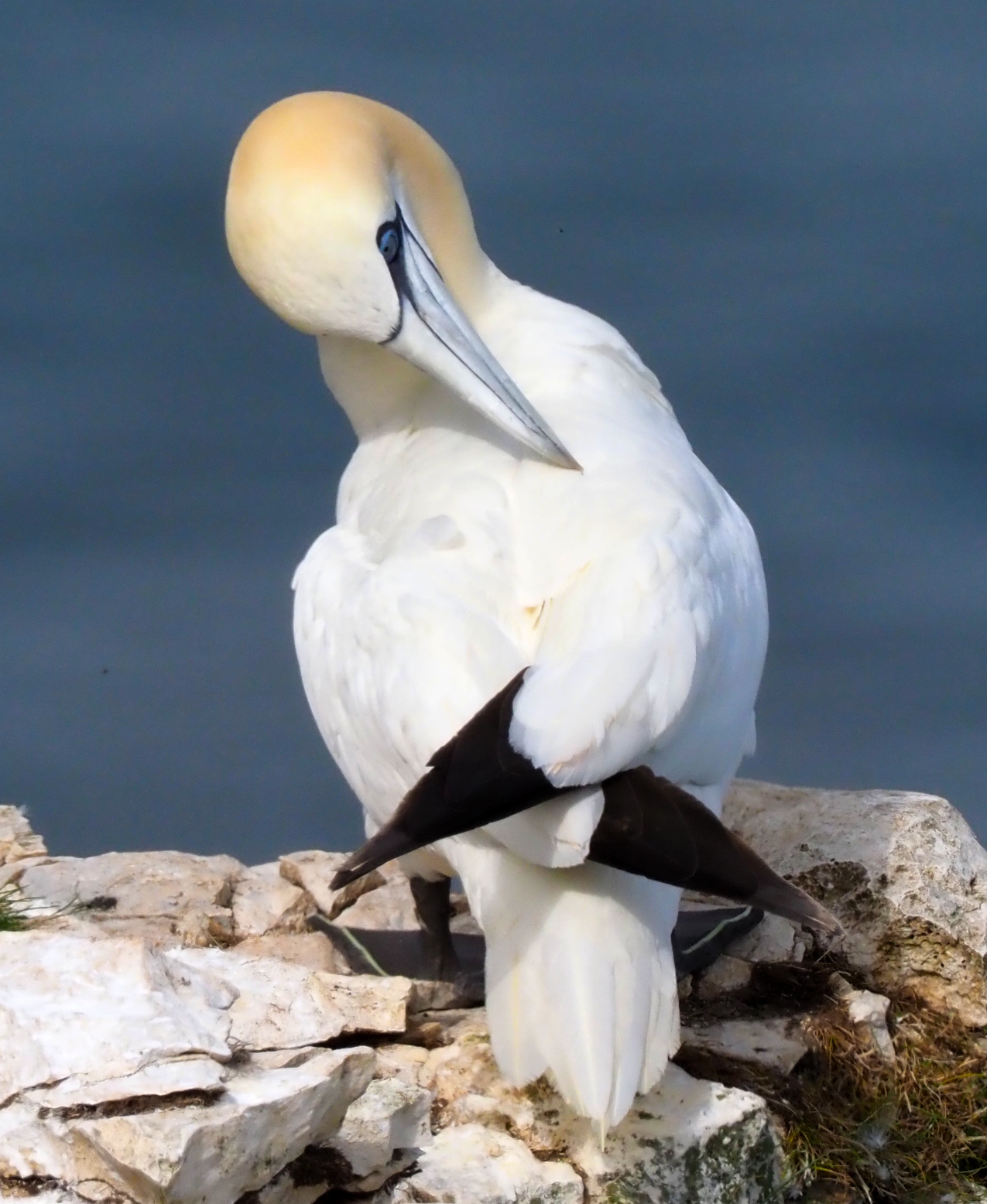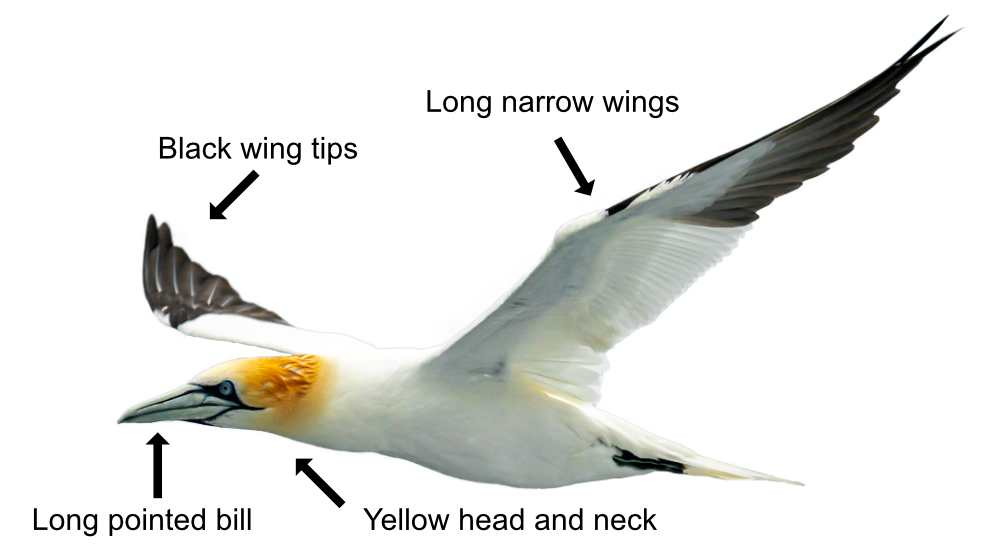
Another bird of the open sea, with over half of the world's Gannets nesting around Britain and Ireland. Gannets used to be eaten for food. For 350 years they were taken from Bass Rock until 1885 when the annual cull of about 1,500 individuals finally ceased. Shetland Gannets were sold as 'Highland Goose' to London restaurants during World War II. Thankfully, we now leave them alone.
Gannets are white with black wing tips and yellow on their head and neck. They have a long neck, long pointed bill, long pointed tail, and long narrow wings that are almost 2 metres across. Young Gannets start black and take 5 years to become fully white. Gannets fly with powerful wingbeats and an effortless glide. Usually silent, they make a "brrrr" noise when nesting.

They feed on fish by plunge diving from a height of 9m or more and hit the water at 100km per hour to catch fish at a depth of 25m or more, folding their wings in before they hit the water like a torpedo. To do this, they have a few adaptations. Their nostrils are located on the inside of their mouth and they have air sacs in their face and chest which act like bubble wrap, cushioning the impact with the water. Their eyes are slightly forward to give them binocular vision so they can judge distances accurately and their feathers are waterproof so they can spend long periods in water. Favourite fish include herring, mackerel, sprats, and sand eels. The Gannet's supposed capacity for eating large quantities of fish has led to 'gannet' becoming a description of somebody with a big appetite.
Gannets nest in large, noisy, densely packed colonies on steep cliffs or small islands. Males establish their tiny cliff ledge territory by aggressive displays towards other males. The ladies cruise by and land with their necks stretched out when they find a male they like. Beak fencing between the two seals the deal. The nest is a simple pile of seaweed, or other material found floating on the sea, stuck together with earth and droppings. Dad does most of the construction work and, over the years, the nest can get up to 2m in height! The single chalky-blue egg is incubated by both parents and hatches after 44 days. They feed the youngster until it can fly 90 days later. The youngster leaves the nest by launching itself off the cliff and flying, something it has not been able to practice, and it can get injured against the rocks if leaving in bad weather. The young Gannet learns to fish and fly as it swims off towards West Africa, its flying (well 'landing') skills being too poor to return to the nest. They will stay in Africa for 2-3 years before returning to join the edge of the breeding colony but don't nest themselves until they are 5-6 years old.
Gannets are long-lived, reaching ages of 20 years or more. About 220,000 breed in Britain and numbers are stable. However, Gannets are vulnerable to oil spills and getting caught in fishing nets and, with so many breeding here, they are Amber Listed.
Their Latin name is 'morus bassanus' where 'morus' is derived from the Ancient Greek 'moros' meaning 'foolish', as breeding Gannets could be so easily killed. The 'bassanus' comes from the Bass Rock in the Firth of Forth where many Gannets breed. Their English name is from the Old English word 'ganot' meaning 'strong or masculine'. Regional names include 'herring gant' in Norfolk and 'mackerel gant' in Yorkshire, referring to the fish they eat.